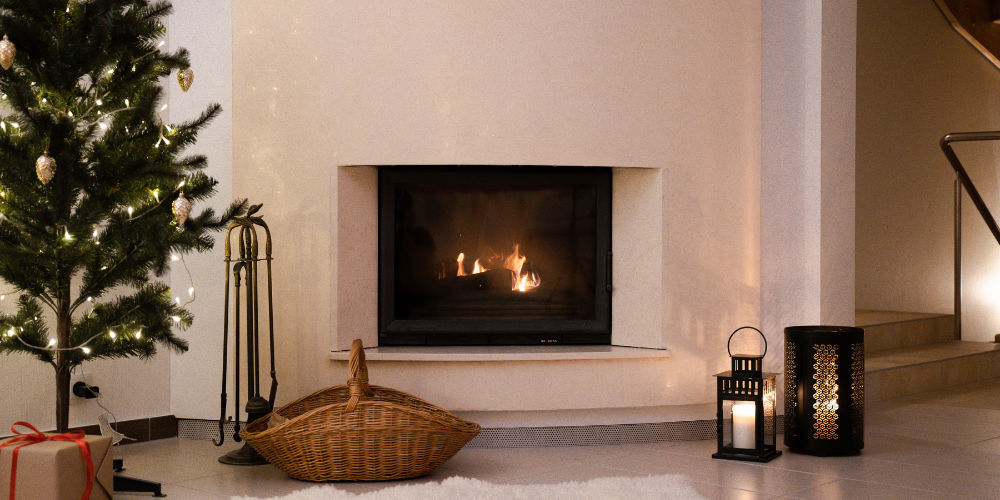
How To Choose An Indoor Heating Method For Your Home
|
|
Time to read min
|
|
Time to read min
STAY WARM THIS WINTER WITH OUR WIDE SELECTION OF SPACE HEATERS
The reality of living in this climate is that we often need to boost the temperature in our homes and workshops to stay comfortable during the winter months.
Space heaters are a versatile option to supplement your heating source. You can move them from room to room to provide extra heat where you need it.
The two most common types of space heaters are radiant heaters and convection heaters and I’m often asked by customers to explain the difference. Both are effective but operate very differently and it's useful to know the difference so you can choose the best one for your space.
• What is your budget?
• Do you need to heat the entire room or a specific area?
• Is energy efficiency important?
• Does portability matter?
• And most importantly, how large is the space you need to heat?
Convection heating evenly circulates warm air throughout a room, making it ideal for long-term use. Options include baseboard and wall-mounted panel convection heaters.
Pros:
As a general rule of thumb, you’ll need 10 watts of heating power for every square foot in a room. To calculate, simply multiply the square footage of the room by 10 to determine the wattage.
Utilizing a ceramic heating element and an internal fan, these heaters distribute warm air throughout the room. Popular and versatile, they come in various sizes and styles, suitable for offices and living rooms, though they may be noisy for bedrooms.
Pros:
Tips:
Utilizing convection heating, these heaters are low-maintenance and easily portable.
Pros:
Radiant Heaters
Work like the sun, providing a concentrated beam of heat that directly heats the objects and people in its vicinity.
These types of heaters tend to be more energy-efficient and require little time or energy to achieve target temperatures.
The advantages of radiant heaters are that they are quiet, they deliver heat directly to you and do so more quickly than convection heaters. They are ideal for providing targeted heating and are generally more efficient if you’re only going to be in a room for a few hours. Employing infrared rays, these heaters mimic the sun's warmth, with differences between radiant and infrared options:
Radiant Heaters:
Infrared Heaters:
Utilizing radiant heating, gas heaters provide instant warmth and are suitable for garages and workspaces. Ventilation may be required.
Pros:
Indoor fireplaces not only provide warmth but also add cozy ambiance to your living space.
Wood Stove Fireplace:
Electric Fireplace:
With so many indoor heating options, finding the ideal solution to ward off the cold is a breeze.
Keep your home warm and inviting throughout the year with the perfect indoor heater for your space.
Explore our selection of indoor heaters to ensure your family stays cozy regardless of the season. If you have any further questions, please visit us in the store and ask me!
Wouldn’t it be nice to be able to heat with one source? The reality of living in this climate is that we often need to boost the temperature in our homes and workshops to stay comfortable during the winter months.
Space heaters are a versatile option to supplement your heating source. You can move them from room to room to provide extra heat where you need it.
The two most common types of space heaters are radiant heaters and convection heaters and I’m often asked by customers to explain the difference. Both are effective but operate very differently and it's useful to know the difference so you can choose the best one for your space.
Radiant Heaters:
Work like the sun, providing a concentrated beam of heat that directly heats the objects and people in its vicinity. These types of heaters tend to be more energy-efficient and require little time or energy to achieve target temperatures. The advantages of radiant heaters are that they are quiet, they deliver heat directly to you and do so more quickly than convection heaters. They are ideal for providing targeted heating and are generally more efficient if you’re only going to be in a room for a few hours.
Convection Heaters:
Have a heating element that warms the air that it connects with, and then that air circulates through a room, creating a current of warm air. Many convection heaters include a fan to speed the circulation of air and distribution of heat. Ceramic space heaters are a type of convection heater. Convection heating is ideal for heating an entire room for a long period of time. They take longer to heat up but once they do they offer efficient and comfortable warmth throughout the space.

